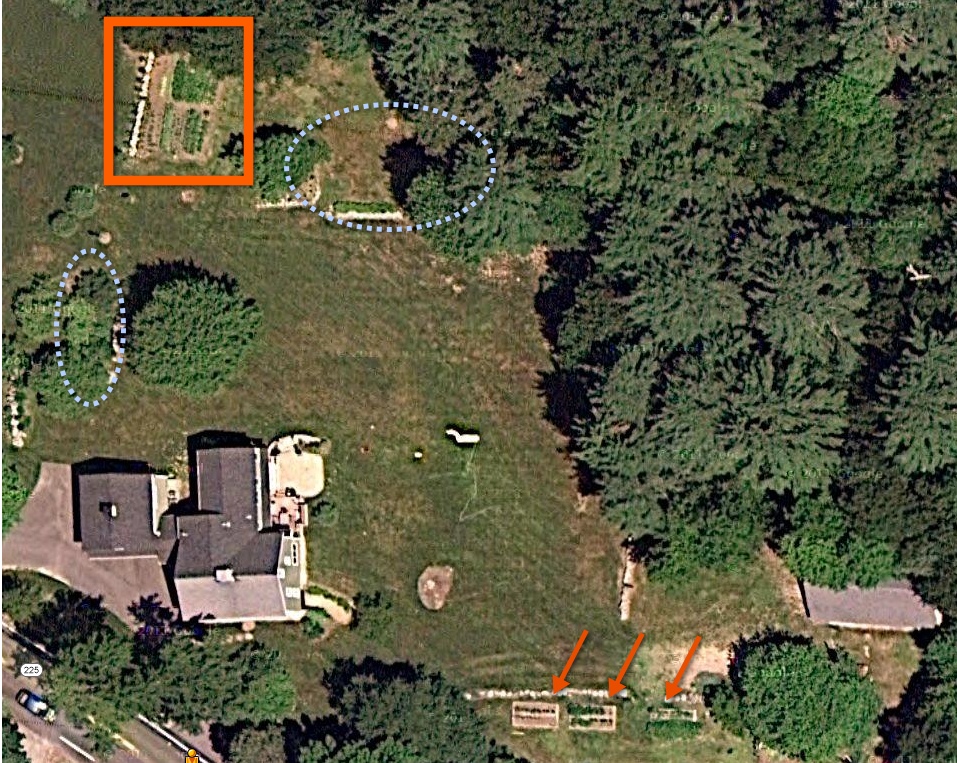Reflections on keeping chickens, 4 years on
/Tomorrow, 10 new chicks arrive to supplement our little backyard flock. As I mentioned earlier, this has become something of a spring ritual, replenishing the flock to make up for natural losses (predator, sickness, stupid-chicken accidents), making sure we keep a fairly steady rate of lay, and a chance to explore and have fun with the different breeds. We've managed to cut down on the annual attrition from that first year as we figured out how to fend off the natural predators (we lost 12 chickens in a week once, and the remainder all looked rather emotionally scarred). This spring's order will take us up to about 30 hens. If I could send a letter back through time, here are a few of the lessons that I wished I could have known up front:
- On where you put the coop: If you site the coop at the edge of the property, you will have further to walk with the water bucket in the winter. Through the snow. At least until the children grew big enough for this daily ritual.
- On nesting boxes: There's a reason all the commercial nesting boxes you see have slanted tops. To keep the chickens from roosting up there. Because if they roost up there, they will poop up there. And somebody's got to clean that stuff.
Also? It doesn't matter how many you make. All the chickens will fight over the last two.
- On coop building: Make sure the door is wide enough for you to fit the wheelbarrow through. Then add another 18". Otherwise, you will have to climb out OVER the contents of the full wheelbarrow every time you clean the coop. And you will curse your lack of foresight every time you do this.
- On cleaning the coop: You will almost certainly never do this as often as you think you will. Also: the children will resist doing this, despite the threats. However, it is good for them. Start them with a pair of gloves and the nesting boxes. Use less shavings than you think you should. It will prompt you to clean more often.
- On predators: They will eat the chickens in various and creative ways. The can be slowed down with decent fencing (bury it a few inches) and some netting, but it will happen. Even the chickens will eat each other under certain circumstances. Other times, a chicken might just die with no obvious cause. You will not be prepared to deal with this the first time it comes up. The children will be mildly grossed out. But this is not the worst way for them to learn about the cycle of life, and they won't turn out to be axe murderers because of it.
Probably.
- On weather: Chickens almost certainly will not freeze to death. Even with several feet of snow on the ground. They also probably won't overheat. Just make sure there's a reasonable mix of shade and shelter, and check in on the water situation each day, and quit worrying about it. A whole lot of chickens made it through a whole lot of seasons before someone invented heat lamps, warming pans and electric fans.
- On feed: If you want to start an argument between chicken keepers, ask them what they feed their birds. Given the fact that, if given a chance, a chicken will eat just about anything that has or is currently living, this choice is more about what makes the keeper feel good than what makes the chicken feel good. A diet of layer pellets, compostable scraps and the occasional leftover pig carcass seems to keep ours happy.
(Note: I just started an argument between chicken people.)
- On store-bought vs. home-flock eggs: You'll rarely meet anyone who talks about how much money they've saved on eggs since getting chickens. You won't be the first to crack that nut. Between the cost of feed, subsidizing non-layers, the coop, occasional replacements for various birds/equipment/fencing, etc., it's pretty much impossible to beat the price of a Stop & Shop dozen. Some people say home-flock eggs taste better, at least. While they certainly cook differently (a consequence of freshness), I've never been able to taste much difference.
(Note: I just started another argument between chicken people.)
But you will be able to avoid paying the children an allowance for YEARS this way, as they get to sell the eggs and pocket the money. Which is less efficient than just putting money in their pockets, but at least involves some regular exchange of work/product/money and includes some basic economic lessons in there.
- On breeds: Get at least 2 but no more than 4 birds that look alike. You will struggle to tell them apart otherwise, and not be able to really keep an eye on which is doing well over time, or tell quickly if anyone is missing.
Besides, a mixed flock is a pretty flock.
- On chickens: On the scale of animal intelligence, a chicken rates somewhere just above a not-particularly-shiny rock. One of our earliest losses was because a chicken had gotten its head stuck in the fencing, and broke its own neck trying to get loose. They are, however, full of personality, and once you're set up, they're easier to care for than most fishtanks, with the added bonus of being able to make an occasional frittata in exchange.
Totally worth it.










